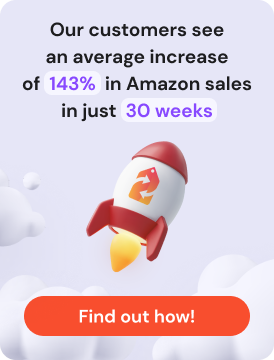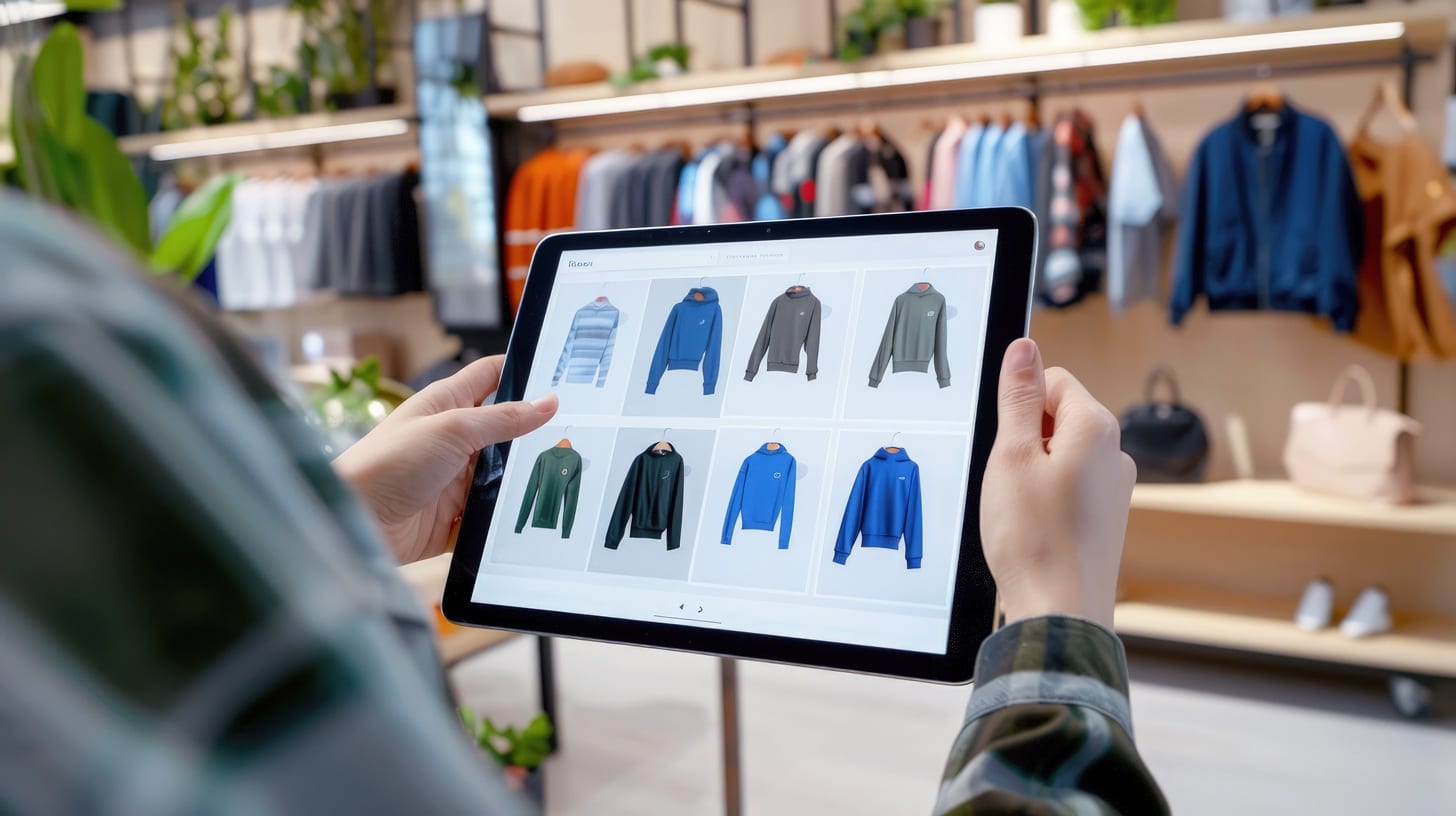Repricing is the strategy of adjusting product prices on online marketplaces in real time to stay competitive. For sellers on Amazon and eBay, mastering repricing can mean more sales and better Buy Box placement. This beginner-friendly guide explains how repricing works, why it matters, and which tools can automate the process.
Why Repricing Matters in eCommerce
Imagine you’re selling a popular brand of headphones on Amazon for $49.99. You check your listing in the morning, and everything looks good. But by noon, three competitors have dropped their prices to $47.99, and suddenly your sales have flatlined. By the time you manually adjust your price, it’s already evening, and you’ve lost an entire day of potential revenue.
This scenario plays out thousands of times daily across online marketplaces like Amazon and eBay. In the hypercompetitive world of eCommerce, price is often the deciding factor between winning a sale and watching it go to a competitor. That’s where repricing becomes essential.
Repricing directly impacts your visibility, sales velocity, and most importantly on Amazon, your ability to win the Buy Box, the „Add to Cart“ button that captures approximately 82% of all Amazon sales. Without an effective repricing strategy, you’re essentially competing with one hand tied behind your back.
What is Repricing?
Repricing is the process of automatically or manually adjusting your product prices based on market conditions, competitor pricing, and predefined business rules. Rather than setting a price and hoping for the best, repricing allows you to respond dynamically to changes in the marketplace.
There are two fundamental approaches to repricing:
Manual repricing involves checking competitor prices yourself and updating your listings accordingly. This might work if you have just a handful of products, but it becomes impossible to scale as your catalog grows.
Automated repricing uses software to monitor competitor prices continuously and adjust your prices according to rules you’ve set. This happens in real time—sometimes within seconds of a competitor’s price change.
Common Repricing Scenarios
Here are typical situations where repricing makes a significant difference:
Competitive undercutting: A competitor lowers their price by $2. Your repricer automatically matches or undercuts by a specified amount to maintain competitiveness.
Stock shortages: When low-priced competitors run out of stock, your repricer can increase your price to maximize profit from reduced competition.
Time-based adjustments: During peak shopping hours, prices can increase slightly to capture higher-intent buyers, then decrease during slower periods to maintain sales velocity.
Margin protection: If competitor prices drop below your minimum profit threshold, your repricer holds your price at the floor you’ve set rather than engaging in an unprofitable price war.
How Repricing Works on Online Marketplaces
Modern repricing software operates through a sophisticated process that balances competitiveness with profitability. Understanding this process helps you make better decisions about your pricing strategy.
Live Competition Monitoring
Repricers continuously scan the marketplace, tracking not just competitor prices but also their seller ratings, fulfillment methods, and stock levels. On Amazon, this includes monitoring who currently holds the Buy Box and at what price. The best repricing tools update every few minutes, ensuring you’re never working with stale data.
Price Floors and Ceilings
These are the guardrails of your repricing strategy. Your price floor is the minimum price you’re willing to accept—typically set based on your cost of goods sold plus desired minimum profit. Your price ceiling is the maximum price you’ll charge, often based on market research about what customers are willing to pay.
Quality repricing software like Repricer.com respects these boundaries absolutely. You’ll never sell at a loss or price yourself out of the market, even if competitor prices go to extremes.
Repricing Triggers
Your repricer doesn’t just randomly change prices—it responds to specific triggers that you define:
Competitor price changes: The most common trigger. When a competitor adjusts their price, your repricer evaluates whether to match, undercut, or hold position based on your rules.
Buy Box changes: On Amazon, when the Buy Box switches to a different seller, your repricer can adjust to try to win it back.
Competitor stockouts: When lower-priced competition runs out of inventory, smart repricing systems can increase your price to capture more profit margin.
Sales velocity targets: If your inventory is moving too slowly, velocity-based repricing can gradually lower prices to accelerate sales.
Manual Repricing vs Automated Repricing
| Feature | Manual Repricing | Automated Repricing |
| Speed | Slow (hours to days) | Real-time (seconds to minutes) |
| Scalability | Low (5-50 products max) | High (unlimited products) |
| Accuracy | Variable (human error) | Consistent (rule-based) |
| Time Investment | High (several hours daily) | Low (setup + monitoring) |
| Response to Changes | Delayed | Immediate |
| Cost | Free (but time-consuming) | Subscription fee |
| Best For | Beginners with tiny catalogs | Growing sellers & professionals |
The data speaks clearly: sellers who switch from manual to automated repricing typically see immediate improvements. According to industry research, automated repricing can increase Buy Box win rates by 15-30% while reducing the time spent on pricing from hours to minutes per week.
Why Repricing Is Critical for Buy Box Wins
On Amazon, winning the Buy Box isn’t just important—it’s everything. The Buy Box is the prominent „Add to Cart“ and „Buy Now“ buttons on a product detail page. When multiple sellers offer the same product, Amazon uses a complex algorithm to determine which seller gets the Buy Box at any given moment.
Price is one of the most heavily weighted factors in Amazon’s Buy Box algorithm. While it’s not the only factor—seller rating, fulfillment method, and inventory levels all matter—competitive pricing is often the difference between winning and losing.
Understanding Landed Price vs Listing Price
Many new sellers make the mistake of focusing solely on their listing price. However, Amazon’s algorithm considers the landed price—the total cost to the customer including product price and shipping. A product listed at $39.99 with $5.99 shipping has a landed price of $45.98, and that’s what Amazon uses for Buy Box calculations.
This is why FBA (Fulfilled by Amazon) sellers often have an advantage—their shipping costs are standardized and typically lower, making their landed prices more competitive even if their listing prices are slightly higher.
The Importance of Repricing Timing
Amazon’s Buy Box doesn’t stay with one seller indefinitely. It rotates among eligible sellers based on various factors, and these rotations can happen multiple times per hour during peak periods. Fast repricing ensures you’re competitive when the algorithm checks your price, maximizing your chances of winning those critical Buy Box windows.
Research shows that repricing delays of even 15-30 minutes can result in lost sales opportunities. This is why the fastest repricers, like Repricer.com, update prices multiple times per hour—ensuring you never miss a Buy Box opportunity due to stale pricing data.
Best Tools for Repricing on Amazon and Beyond
The repricing software market has evolved significantly, offering tools for different business sizes and strategies. Here’s what you need to know about the major players:
Amazon’s Automate Pricing Tool
Price: Free (included with Seller Central)
Amazon offers a basic built-in repricing tool that’s free for all sellers. It allows you to set simple rules like „match lowest price“ or „beat lowest price by a percentage.“ While this sounds appealing, it has significant limitations: slow update frequency, basic rule logic, and no advanced features like velocity-based repricing or multi-channel support. It’s suitable only for sellers just starting out who need something better than manual repricing but aren’t ready to invest in professional tools.
BQool
Price range: Starts around $25-50/month
BQool offers repricing alongside other seller tools like feedback management and analytics. Their repricing includes standard features but update speeds can be slower than specialized repricers. Best for sellers who want an all-in-one toolkit rather than best-in-class repricing performance.
Seller Snap
Price range: Starts around $39-79/month
Seller Snap focuses on AI-driven repricing with an emphasis on profit optimization rather than just winning the Buy Box. Their algorithmic approach can work well for sellers with established products and consistent sales history, though the learning curve can be steeper than rule-based repricers.
Aura
Price range: Starts around $100+/month
Aura positions itself as a premium option with advanced analytics and reporting. It’s primarily geared toward larger sellers with significant revenue who need enterprise-level features and support.
Repricer.com
Price range: Competitive pricing with flexible plans
Repricer.com stands out as the fastest Amazon repricer on the market, with industry-leading update speeds that can make the difference in competitive categories. Key advantages include intuitive rule creation, advanced features like velocity-based repricing and sales repricing, multi-marketplace support, and exceptional customer support. The platform is designed for both new sellers who need simplicity and experienced sellers who demand sophisticated control.
What sets Repricer.com apart is its focus on speed and reliability. In testing, Repricer.com consistently updates prices faster than alternatives, which translates directly to more Buy Box wins and higher sales. The platform also offers unique features like Sales Repricing that adjusts prices based on your actual sales performance, and Amazon Business repricing for B2B sellers.
Ready to experience the difference that the fastest repricer can make? Book a demo to see Repricer.com in action, or start your free trial today—no credit card required.
When to Use Repricing (and When Not To)
Repricing isn’t a one-size-fits-all solution. Understanding when it provides maximum value—and when it might not be appropriate—helps you make smarter business decisions.
Ideal Scenarios for Repricing
Resellers and retail arbitrage: If you’re selling existing brands and products that other sellers also offer, repricing is essential. The competition is direct and price-based, making automated repricing one of your most important competitive advantages.
High-volume, competitive categories: Categories like electronics, books, toys, and home goods typically have dozens of sellers per product. In these markets, manual repricing simply can’t keep pace with the competition.
Seasonal products: Items with fluctuating demand benefit enormously from repricing strategies that automatically adjust to market conditions throughout the season.
Fast inventory turnover: If you need to move inventory quickly—whether due to storage costs, perishability, or capital needs—repricing helps optimize the balance between speed and profit.
Exercise Caution When
Premium or luxury positioning: If your brand strategy relies on premium positioning and perceived value, aggressive repricing might undermine your brand image. However, you can still use repricing with conservative rules that maintain your premium price points while defending against unauthorized resellers.
Private label products without direct competition: If you’re the only seller of your private label product, traditional competitive repricing doesn’t apply. However, you might still benefit from strategic pricing adjustments based on sales velocity and market testing.
Extremely low margins: If your profit margins are already razor-thin, automatic repricing that undercuts competitors could push you into unprofitable territory. In such cases, focus first on improving your margins through better sourcing or cost reduction, then implement repricing with very strict floor prices.
Glossary of Key Repricing Terms
Understanding the language of repricing helps you make better decisions and communicate effectively with support teams or other sellers.
Landed Price: The total cost to the customer, including product price and shipping. Amazon’s Buy Box algorithm uses landed price rather than just listing price.
Buy Box: The featured offer on an Amazon product detail page, showing the „Add to Cart“ and „Buy Now“ buttons. Winning the Buy Box is critical as it captures 82% of sales.
Repricing Rules: The logic you configure that tells your repricer when and how to adjust prices. Rules typically include conditions (triggers) and actions (price changes).
Price Floor: The minimum price you’re willing to accept for a product, typically based on your cost plus minimum acceptable profit margin.
Price Ceiling: The maximum price you’ll charge for a product, often based on market research or brand guidelines.
Competitive Pricing: The strategy of setting prices based on competitor prices rather than costs alone.
Dynamic Pricing: A broader term for pricing that changes based on various factors including demand, time of day, competitor behavior, and market conditions. Repricing is a form of dynamic pricing focused specifically on competitor-based adjustments.
Velocity Repricing: A strategy that adjusts prices based on sales velocity—lowering prices to accelerate slow-moving inventory or raising prices on fast-movers to maximize profit.
FBA (Fulfilled by Amazon): Amazon’s fulfillment service where they store, pack, and ship your products. FBA sellers typically have advantages in Buy Box competition due to faster shipping and lower landed prices.
FBM (Fulfilled by Merchant): When sellers handle their own storage and shipping. FBM sellers need careful repricing strategies to compete with FBA’s fulfillment advantages.
Frequently Asked Questions About Repricing
Do all sellers need to use a repricer?
Not necessarily, but the vast majority benefit significantly from repricing. If you’re selling unique products with no direct competition, traditional competitive repricing may not apply. However, even in these cases, tools like velocity-based repricing can help optimize prices based on your sales performance. For any seller facing direct competition—which includes most resellers, retail arbitrage sellers, and those selling popular brands—a repricer is essentially mandatory to remain competitive.
Is Amazon’s free repricer good enough?
Amazon’s Automate Pricing tool works for basic needs but has significant limitations. It updates slowly (typically once per hour or less), offers only simple rule logic, and lacks advanced features that can make a substantial difference to your bottom line. Most sellers find that upgrading to a specialized repricer like Repricer.com pays for itself quickly through increased Buy Box wins and sales. Learn more about the key differences between Amazon’s built-in tool and professional third-party repricers.
Can repricing lower my profits?
Only if configured incorrectly. The key is setting appropriate price floors that protect your margins. A properly configured repricer will never price below your floor, ensuring you maintain profitability. In fact, most sellers find that repricing increases profits by winning more Buy Box time and sales volume. The platform’s advanced features also include profit optimization that finds the sweet spot between competitiveness and margin.
How fast should a repricer update prices?
Speed matters significantly in competitive markets. The best repricers update multiple times per hour—Repricer.com updates continuously, often within minutes of competitor changes. Slower repricers that update only once per hour or less can result in lost sales opportunities, especially during peak shopping periods or in highly competitive categories.
Can I use repricing for multiple marketplaces?
Yes, many repricing tools including Repricer.com support multiple marketplaces like Amazon, eBay, and others. This is particularly valuable if you’re selling on multiple platforms, as it allows you to manage all your pricing from a single dashboard while applying platform-specific strategies. For example, you might use more aggressive repricing on Amazon while maintaining steadier prices on eBay.
What happens if all competitors use repricers?
This is increasingly common, and it doesn’t make repricing less valuable—it makes it more essential. When all competitors use repricing, the advantage goes to those with the fastest updates and smartest rules. This is where quality matters: sophisticated repricing tools can implement strategies beyond simple price matching, such as maintaining specific margins, timing adjustments to avoid price wars during low-traffic hours, and using velocity-based rules to optimize profitability rather than just matching the bottom price.
How do I avoid price wars with repricing?
Price wars happen when multiple sellers continually undercut each other with no floor limits. Avoiding price wars requires setting firm price floors based on your costs and minimum acceptable margins. Quality repricing software includes features specifically designed to prevent race-to-the-bottom scenarios, such as minimum profit rules, ignore lists for problematic competitors, and time-based rules that adjust strategy based on market conditions.
Can repricing work for private label products?
Yes, but differently than for reselling. For private label products where you’re the exclusive seller, traditional competitive repricing doesn’t apply. However, you can still benefit from market-based repricing that adjusts prices based on sales performance, seasonal trends, and inventory levels. Cross-ASIN repricing also allows private label sellers to compete against similar products in their category rather than identical listings.
Get Started with Repricing Smartly
Repricing represents one of the highest-leverage activities you can implement in your eCommerce business. The difference between manual and automated repricing often translates directly to 20-40% increases in sales volume through improved Buy Box performance and market responsiveness.
The key to successful repricing is choosing the right tool and configuring it properly. Here’s your checklist for getting started:
✓ Calculate your true costs: Know your product costs, Amazon fees, and shipping expenses to set accurate price floors.
✓ Research competitor landscape: Understand who you’re competing against and their pricing patterns.
✓ Choose a repricer that matches your needs: Consider factors like update speed, features, ease of use, and support quality.
✓ Start with conservative rules: Begin with rules that maintain good margins and gradually optimize based on results.
✓ Monitor and adjust: Review your repricing performance regularly using analytics and reporting tools, and refine your strategy based on what’s working.
✓ Scale thoughtfully: As you gain confidence, expand repricing to more of your catalog and experiment with advanced strategies.
The most successful Amazon and eBay sellers don’t leave pricing to chance. They leverage professional repricing tools to compete effectively while protecting their margins. If you’re serious about growing your online marketplace business, automated repricing isn’t optional—it’s essential infrastructure.
Ready to take your pricing strategy to the next level? Repricer.com offers the speed, features, and support you need to win more Buy Box time and increase your sales. Start your free trial today and experience the difference that the fastest repricer can make for your business. Or if you’d like to see the platform in action first, book a personalized demo with our team.
The marketplace waits for no one. Start repricing smarter today.





